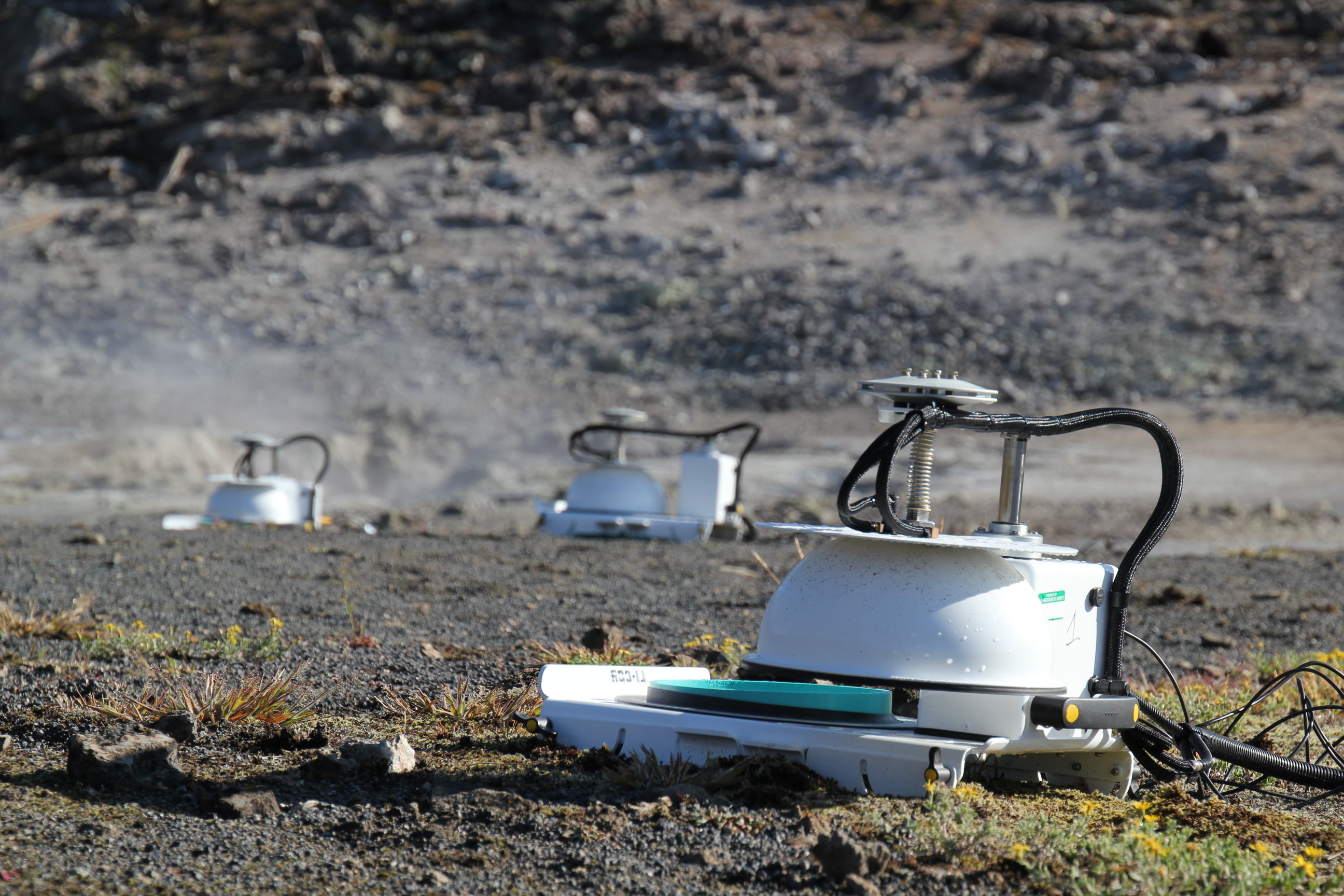Squeak! Ancient Helium Escaping from Yellowstone


The giant magma blob beneath Yellowstone National Park unleashed tons of ancient helium gas when it torched North America, according to a new study.
"The amount of crustal helium coming out is way more than anyone would have expected," said Jacob Lowenstern, lead study author and scientist-in-charge at the U.S. Geological Survey's Yellowstone Volcano Observatory. The findings appear in today's (Feb. 19) issue of the journal Nature.
Yellowstone National Park's famous geysers burble within the remains of a supervolcano that first exploded 2.1 million years ago. Both the volcano and the geysers owe their existence to a hotspot, a massive plume of molten rock rising from within Earth's mantle toward the surface. [Infographic: The Geology of Yellowstone]
However, before western North America trundled over the hotspot, Yellowstone's future birthplace went undisturbed for more than 2 billion years, the study authors think. This gave the continental rocks plenty of time to build up big helium-gas stores via the decay of radioactive elements in the crust. (Most helium created on Earth comes from uranium and thorium.) The helium was probably trapped both in rocks and in fluids such as groundwater.
Because all was quiet in this corner where the West meets the Plains, no tectonic grinding freed the helium via fractures such as faults. Only when the hotspot drilled through the crust a couple of million years ago could the helium finally escape. The rising magma heated and cracked the crust, releasing the gas, and provided a path to the surface via churning fluids and molten rock.
Pop, hiss, squeak!
Lowenstern compared the process to a faucet. "It was like a spigot that was turned off for a really long time, not allowing the helium to migrate through the crust, and when the hotspot came to Yellowstone, it turned the spigot back on," he said.
Get the world’s most fascinating discoveries delivered straight to your inbox.
Lowenstern and his co-authors discovered the strange quantities of helium a few years ago, while tracking gases at Yellowstone. The gases — such as carbon dioxide, sulfur and helium — help reveal what the magma beneath the surface is doing.
The helium escapes from the crust via fractures and thermal features, such as the park's steam vents and geysers. [Video: A Scenic Tour of Yellowstone National Park]
The researchers measured two helium isotopes, which are atoms of the same element with different numbers of neutrons. Helium-3 has one neutron, and helium-4 has two.
The two helium isotopes come from different sources. Helium-3 created on Earth forms primarily in the mantle, the thick, hot layer between the crust and the core. Helium-4 is produced primarily in the crust from the decay of radioactive elements. The proportions of helium-3 and helium-4 in a gas sample reveal how much helium comes from the mantle and how much comes from the crust.
Yellowstone's helium-gas emissions were already known for their high helium-3 content, a sign of the massive mantle hotspot beneath the region. But the proportion of helium-4 in the gases escaping from the crust is also much higher than expected, the study reports.
"It's a little bit surprising," Lowenstern told Live Science's Our Amazing Planet. "Not only is there this really impressive mantle source, but there's also this crustal source, too. It was definitely exciting to see this old signature."
Small but strong
Helium is just a tiny fraction of the gases escaping Yellowstone each day. The park produces about 350 lbs. (160 kilograms) of helium gas each day, but 44 million to 110 million lbs. (20 million to 50 million kg) of carbon dioxide daily, Lowenstern said.
Even so, the quantity of helium-4 in Yellowstone's gas emissions is hundreds to thousands of times greater than it should be — a sign that the crust is releasing its ancient stores of the rare isotope, the researchers said.
The findings add to growing evidence that Earth's crust can cache gases and fluids for billions of years, providing a window into the planet's early past. In 2013, researchers reported finding a pocket of 2.6-billion-year-old water in a deep mine in Ontario, Canada.
"This work is another important example of very ancient fluid accumulations in the crust," said Greg Holland, a geochemist at Lancaster University in the United Kingdom who was not involved in the study. "It adds to the evidence that the crust has the important ability to store [gases] over geologically significant timescales, with implications for evolution of subsurface life and also how the mantle-crust-atmosphere system operates over geological time."
Editor's note: This story was updated Feb. 20 to correct the proportion of helium-3 to helium-4 on Earth.
Email Becky Oskin or follow her @beckyoskin. Follow us @OAPlanet, Facebook and Google+. Original article at Live Science's Our Amazing Planet.





